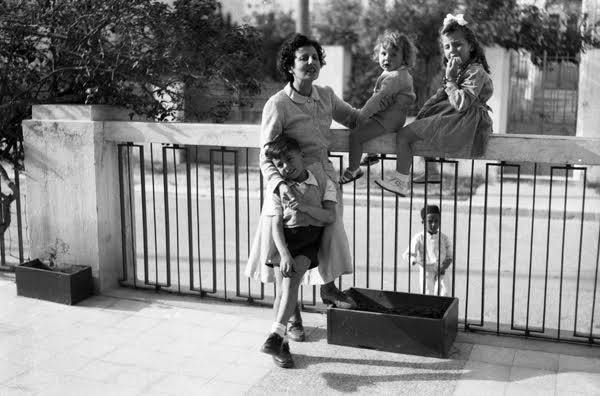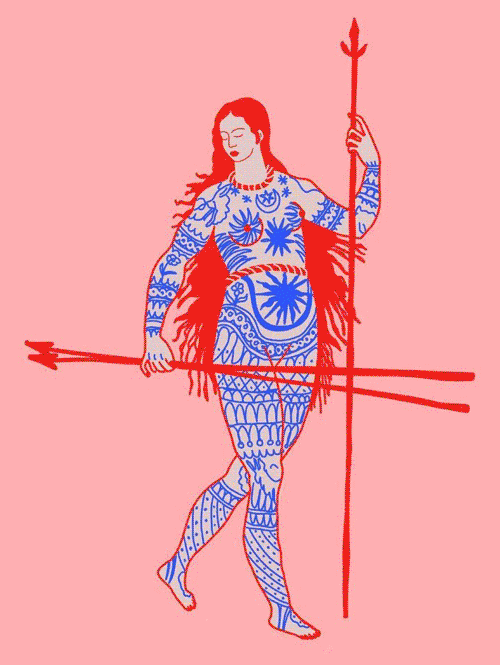Create an account
Welcome! Register for an account
La password verrà inviata via email.
Recupero della password
Recupera la tua password
La password verrà inviata via email.
-
-
- Categorie
- #iorestoacasa
- Agenda
- Archeologia
- Architettura
- Arte antica
- Arte contemporanea
- Arte moderna
- Arti performative
- Attualità
- Bandi e concorsi
- Beni culturali
- Cinema
- Contest
- Danza
- Design
- Diritto
- Eventi
- Fiere e manifestazioni
- Film e serie tv
- Formazione
- Fotografia
- Libri ed editoria
- Mercato
- MIC Ministero della Cultura
- Moda
- Musei
- Musica
- Opening
- Personaggi
- Politica e opinioni
- Street Art
- Teatro
- Viaggi
- Categorie
-
Leone Contini – Bel Suol d’Amore – The Scattered Colonial Body
L’installazione artistica esplora le connessioni tra collezioni museali, archivi e raccolte familiari, incluse quelle dell’artista la cui madre è nata a Tripoli e cerca di innescare una nuova riflessione critica sul colonialismo italiano a partire dall’interconnessione tra sfera pubblica e memorie private
Comunicato stampa
Segnala l'evento
Bel Suol d’Amore - The Scattered Colonial Body, di Leone Contini, a cura di Arnd Schneider.
Bel Suol d’Amore, dalla canzone di propaganda “A Tripoli” del 1911, un’interpretazione artistica delle collezioni dell’ex Museo coloniale africano ora in custodia al Museo delle Civiltà, che rappresenta la prima tappa di un processo di riflessione più ampio sulle collezioni e sulla storia coloniale italiana che proseguirà nei prossimi mesi attraverso una serie di iniziative del Museo, permettendo di offrire nuove prospettive su aspetti del patrimonio culturale italiano finora poco esplorate.
Bel Suol d’Amore - The Scattered Colonial Body, dal 25 giugno al 9 luglio 2017, con inaugurazione sabato 24 giugno alle 17:30, e con una performance alle 18:00 e alle 20:00, una collaborazione tra l’artista Leone Contini e l’antropologo Arnd Schneider, finalizzata all’esplorazione di “patrimoni contestati”, con particolare riferimento al colonialismo italiano, parte del progetto TRACES: Transmitting Contested Cultural Heritage with the Arts: From Intervention to Co-Production, finanziato dalla Commissione Europea nell’ambito del programma Horizon 2020.
Tra gli oggetti più controversi le maschere facciali, calchi di volti umani, realizzati in gesso durante le missioni in Libia condotte da antropologi italiani tra gli anni Venti e Trenta del Novecento. Oggi queste raccolte, in parte conservate nei depositi del Museo Pigorini e in parte dislocate in altri luoghi di Roma – in ogni caso non fruibili al pubblico – costituiscono un “corpo coloniale disperso”, invisibile, sconosciuto, quasi dimenticato, e, come la storia coloniale del Paese, soggetto a un’apparente amnesia.
L'installazione artistica esplora le connessioni tra collezioni museali, archivi e raccolte familiari, incluse quelle dell’artista la cui madre è nata a Tripoli e cerca di innescare una nuova riflessione critica sul colonialismo italiano a partire dall’interconnessione tra sfera pubblica e memorie private.
Bel Suol d’Amore * – The Scattered Colonial Body
Leone Contini (artist) and Arnd Schneider (curator)
Bel Suol d’Amore – The Scattered Colonial Body is an artistic interpretation of the collections of the former African Colonial Museum now in storage at the Museo delle Civiltà and represents a first step in a broader process of reflection on the collections and the history of Italian colonialism that continues in the following months with a number of initiatives. The intention is to offer new perspectives and visions on aspects of the Italian cultural heritage as yet little explored.
This exhibition is the result of a collaboration between the artist Leone Contini and anthropologist Arnd Schneider to identify and work with sites of contested colonial heritage in Italy. During the course of the last 6 months, they have investigated the collections of the former IsIAO - Istituto Italiano per l'Africa e l'Oriente (The Italian Institute of Africa and the Orient), including the former African Colonial Museum. Dispersed across the Italian capital, they constitute a ‘scattered colonial body’ – hidden, little known and almost forgotten, and just as the country’s colonial history, the subject of an apparent amnesia in Italian society. What once was for late 19th and early 20th century liberal governments, and then for the Fascist dictatorship, regarded as a glorious colonial empire, has since the end of World War II fallen into oblivion, and only occasional controversy (between apologists of colonialism and those demanding its critical historical analysis, including racism, repression of indigenous populations, and war crimes).
Although it is based on research in museum collections (often hidden away in depots or, in any case, inaccessible to the public), as well as family collections and archives (including those of the artist whose mother was born in Tripoli), this exhibition does not pretend to bring new ‘facts’ to live, but rather intervenes into the debate in other ways. It makes ‘visible’ (at least in part) the dismembered and scattered body of the collections of the former IsIAO. It aims to provoke new thinking and provide insight into the serendipitous research process where the private and inter-subjective have met in unexpected ways – for instance, in the encounters of the artist with employees of the National Museum of Prehistory and Ethnography “L. Pigorini”, who incidentally shared with him colonial (and post-colonial) family histories as settlers in Libya (one of the former Italian colonies). In fact, during the course of the research, the work with former Italian settlers in Libya became more important and included also the exploration of their foodways, in particular couscous - a dish adapted from the colonized country.
A central focus of the exhibition are the facial plaster masks, executed during expeditions by Italian anthropologists to Libya, in the 1920s and 1930s, among them Lidio Cipriani (a Fascist and supporter of scientific racism who in 1938 was one of the signatories of the ‘Manifesto della Razza’). For the facial plaster masks, Contini and Schneider decided to re-construct them as 3D copies, which would permit them to be taken out of the museum depots- for instance, to use in discussions. The procedure re-enacts and deconstructs the original act of appropriation from the colonial subject. With the process of scanning (repeated as a performance during the opening of the exhibition) and subsequent 3D-printing, Contini and Schneider wanted to invoke a process of ‘reanimation’ of the colonial subject who comes ‘alive’ as a simulacrum, and whose agency had been repressed through the colonial regime, and the often forced and violent ‘impression’ of plaster to obtain the facial mask.
Now that a large part of the ISiAO collections has been incorporated by the Pigorini Museum as part of the Museo delle Civiltà, a number of activities will be initiated, in order to create a future exposition that will include a critical reappraisal of material culture within the history of Italian colonialism and relate to current post-colonial debates.
(*) “Beautiful Land of Love”, from the Italian propaganda song “A Tripoli” (1911)
Leone Contini’s work is located at the crossroads between art and anthropology. His practices include interventions in public space, exhibitions, lecture performances, textual and audio-visual narratives. Among the places where he has exhibited or held interventions are: Gam, Torino, 2017; Mudec, Milano, 2017; Quadriennale, Roma, 2016; Cittadellarte, Biella, 2016; 2nd Tbilisi Triennial Georgia, 2015, D-0 Ark Underground Biennal Bosnia 2015, Kronika Bytom, Poland, 2015, Delfina Foundation, London, 2015, 2014, and 2017; MART, Rovereto, 2015; Galleria Civica, Trento, 2014; Khoj, New Delhi, 2014; Kunstraum, Munich, 2014; Villa Romana, Florence, 2014; DOCVA, Milano, 2014 and 2015; Kunstverein, Amsterdam 2013, Tirana Art Lab, 2013.
http://leonecontini.tumblr.com/
Arnd Schneider is Professor of Social Anthropology, University of Oslo, and works on contemporary art, visual anthropology, and global migrations. His latest book is Alternative Art and Anthropology: Global Encounters (Bloomsbury 2017); he co-organized the international conference Fieldworks: Dialogues between Art and Anthropology (Tate Modern, 2003), and previous publications include Contemporary Art and Anthropology (Berg, 2006), Between Art and Anthropology (Berg, 2010), and Anthropology and Art Practice (Bloomsbury, 2013) all co-edited with Christopher Wright, and Experimental Film and Anthropology (Bloomsbury, 2014), co-edited with Caterina Pasqualino. http://www.sv.uio.no/sai/english/people/aca/arnds/index.html
The research and exhibition are part of TRACES: Transmitting Contested Cultural Heritage with the Arts: From Intervention to Co-Production, a project funded by the European Commission as part of the Horizon 2020 Research Programme.
Bel Suol d’Amore, dalla canzone di propaganda “A Tripoli” del 1911, un’interpretazione artistica delle collezioni dell’ex Museo coloniale africano ora in custodia al Museo delle Civiltà, che rappresenta la prima tappa di un processo di riflessione più ampio sulle collezioni e sulla storia coloniale italiana che proseguirà nei prossimi mesi attraverso una serie di iniziative del Museo, permettendo di offrire nuove prospettive su aspetti del patrimonio culturale italiano finora poco esplorate.
Bel Suol d’Amore - The Scattered Colonial Body, dal 25 giugno al 9 luglio 2017, con inaugurazione sabato 24 giugno alle 17:30, e con una performance alle 18:00 e alle 20:00, una collaborazione tra l’artista Leone Contini e l’antropologo Arnd Schneider, finalizzata all’esplorazione di “patrimoni contestati”, con particolare riferimento al colonialismo italiano, parte del progetto TRACES: Transmitting Contested Cultural Heritage with the Arts: From Intervention to Co-Production, finanziato dalla Commissione Europea nell’ambito del programma Horizon 2020.
Tra gli oggetti più controversi le maschere facciali, calchi di volti umani, realizzati in gesso durante le missioni in Libia condotte da antropologi italiani tra gli anni Venti e Trenta del Novecento. Oggi queste raccolte, in parte conservate nei depositi del Museo Pigorini e in parte dislocate in altri luoghi di Roma – in ogni caso non fruibili al pubblico – costituiscono un “corpo coloniale disperso”, invisibile, sconosciuto, quasi dimenticato, e, come la storia coloniale del Paese, soggetto a un’apparente amnesia.
L'installazione artistica esplora le connessioni tra collezioni museali, archivi e raccolte familiari, incluse quelle dell’artista la cui madre è nata a Tripoli e cerca di innescare una nuova riflessione critica sul colonialismo italiano a partire dall’interconnessione tra sfera pubblica e memorie private.
Bel Suol d’Amore * – The Scattered Colonial Body
Leone Contini (artist) and Arnd Schneider (curator)
Bel Suol d’Amore – The Scattered Colonial Body is an artistic interpretation of the collections of the former African Colonial Museum now in storage at the Museo delle Civiltà and represents a first step in a broader process of reflection on the collections and the history of Italian colonialism that continues in the following months with a number of initiatives. The intention is to offer new perspectives and visions on aspects of the Italian cultural heritage as yet little explored.
This exhibition is the result of a collaboration between the artist Leone Contini and anthropologist Arnd Schneider to identify and work with sites of contested colonial heritage in Italy. During the course of the last 6 months, they have investigated the collections of the former IsIAO - Istituto Italiano per l'Africa e l'Oriente (The Italian Institute of Africa and the Orient), including the former African Colonial Museum. Dispersed across the Italian capital, they constitute a ‘scattered colonial body’ – hidden, little known and almost forgotten, and just as the country’s colonial history, the subject of an apparent amnesia in Italian society. What once was for late 19th and early 20th century liberal governments, and then for the Fascist dictatorship, regarded as a glorious colonial empire, has since the end of World War II fallen into oblivion, and only occasional controversy (between apologists of colonialism and those demanding its critical historical analysis, including racism, repression of indigenous populations, and war crimes).
Although it is based on research in museum collections (often hidden away in depots or, in any case, inaccessible to the public), as well as family collections and archives (including those of the artist whose mother was born in Tripoli), this exhibition does not pretend to bring new ‘facts’ to live, but rather intervenes into the debate in other ways. It makes ‘visible’ (at least in part) the dismembered and scattered body of the collections of the former IsIAO. It aims to provoke new thinking and provide insight into the serendipitous research process where the private and inter-subjective have met in unexpected ways – for instance, in the encounters of the artist with employees of the National Museum of Prehistory and Ethnography “L. Pigorini”, who incidentally shared with him colonial (and post-colonial) family histories as settlers in Libya (one of the former Italian colonies). In fact, during the course of the research, the work with former Italian settlers in Libya became more important and included also the exploration of their foodways, in particular couscous - a dish adapted from the colonized country.
A central focus of the exhibition are the facial plaster masks, executed during expeditions by Italian anthropologists to Libya, in the 1920s and 1930s, among them Lidio Cipriani (a Fascist and supporter of scientific racism who in 1938 was one of the signatories of the ‘Manifesto della Razza’). For the facial plaster masks, Contini and Schneider decided to re-construct them as 3D copies, which would permit them to be taken out of the museum depots- for instance, to use in discussions. The procedure re-enacts and deconstructs the original act of appropriation from the colonial subject. With the process of scanning (repeated as a performance during the opening of the exhibition) and subsequent 3D-printing, Contini and Schneider wanted to invoke a process of ‘reanimation’ of the colonial subject who comes ‘alive’ as a simulacrum, and whose agency had been repressed through the colonial regime, and the often forced and violent ‘impression’ of plaster to obtain the facial mask.
Now that a large part of the ISiAO collections has been incorporated by the Pigorini Museum as part of the Museo delle Civiltà, a number of activities will be initiated, in order to create a future exposition that will include a critical reappraisal of material culture within the history of Italian colonialism and relate to current post-colonial debates.
(*) “Beautiful Land of Love”, from the Italian propaganda song “A Tripoli” (1911)
Leone Contini’s work is located at the crossroads between art and anthropology. His practices include interventions in public space, exhibitions, lecture performances, textual and audio-visual narratives. Among the places where he has exhibited or held interventions are: Gam, Torino, 2017; Mudec, Milano, 2017; Quadriennale, Roma, 2016; Cittadellarte, Biella, 2016; 2nd Tbilisi Triennial Georgia, 2015, D-0 Ark Underground Biennal Bosnia 2015, Kronika Bytom, Poland, 2015, Delfina Foundation, London, 2015, 2014, and 2017; MART, Rovereto, 2015; Galleria Civica, Trento, 2014; Khoj, New Delhi, 2014; Kunstraum, Munich, 2014; Villa Romana, Florence, 2014; DOCVA, Milano, 2014 and 2015; Kunstverein, Amsterdam 2013, Tirana Art Lab, 2013.
http://leonecontini.tumblr.com/
Arnd Schneider is Professor of Social Anthropology, University of Oslo, and works on contemporary art, visual anthropology, and global migrations. His latest book is Alternative Art and Anthropology: Global Encounters (Bloomsbury 2017); he co-organized the international conference Fieldworks: Dialogues between Art and Anthropology (Tate Modern, 2003), and previous publications include Contemporary Art and Anthropology (Berg, 2006), Between Art and Anthropology (Berg, 2010), and Anthropology and Art Practice (Bloomsbury, 2013) all co-edited with Christopher Wright, and Experimental Film and Anthropology (Bloomsbury, 2014), co-edited with Caterina Pasqualino. http://www.sv.uio.no/sai/english/people/aca/arnds/index.html
The research and exhibition are part of TRACES: Transmitting Contested Cultural Heritage with the Arts: From Intervention to Co-Production, a project funded by the European Commission as part of the Horizon 2020 Research Programme.
24
giugno 2017
Leone Contini – Bel Suol d’Amore – The Scattered Colonial Body
Dal 24 giugno al 09 luglio 2017
arte contemporanea
arte etnica
arte etnica
Location
PALAZZO DELLE SCIENZE – MUSEO NAZIONALE PREISTORICO ETNOGRAFICO PIGORINI
Roma, Piazza Guglielmo Marconi, 14, (Roma)
Roma, Piazza Guglielmo Marconi, 14, (Roma)
Vernissage
24 Giugno 2017, h 17:30
Performance: 18:00 e 20:00
Autore
Curatore









